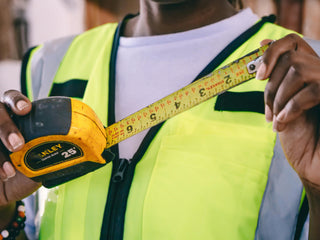We all think we know the answers to condom usage; everyone knows someone who has had a condom split, but we believe it is important to bust some myths and tell you exactly why condoms break.
Condom manufacturers would not be in business if condoms didn't do their job. Condoms are made, and the quality is rigorously tested to ensure they remain intact during sexual activity.
Condoms are made of rubber latex, a natural product, polyurethane or polyisoprene, a rubber latex substitute for those who might be allergic to rubber. Both kinds of latex are durable, stretchy, waterproof, and 100% suitable for the purpose of birth control and STI prevention.
There are several reasons why a condom might break, but design and manufacture are not one of them. Here are the common reasons why a condom fails.
Table of Contents:
The condom has passed its expiry date
When you buy a packet of condoms, they will have an expiry date clearly displayed on the box. The purpose of an expiry date is to alert users to the fact that condoms do not last forever; highlighting the condom's shelf life ensures that they are effective when used within that expiration date.
The average shelf life of a condom is 5 years; however, there are exceptions to this rule. See the table listed below:
- Natural rubber latex condoms - shelf life of up to 5 years
- Polyurethane (manufactured latex) - shelf life of up to 5 years
- Polyisoprene (manufactured latex)- shelf life of up to 5 years
- Natural rubber latex with spermicide - shelf life of up to 3 years
- Polyurethane with spermicide - shelf life of up to 3 years
- Polyisoprene with spermicide - shelf life of up to 3 years
There are always other factors that mean some condoms have shorter and longer expiry dates than those listed above, which is why it's vital to consult the packet you bought to be 100% sure.
Never be tempted to use a condom for sexual activity if it has expired. Using an expired condom could lead to pregnancy, contracting an STD (sexually transmitted disease), or both. Using oil based lubricants can weaken condoms, so you should avoid using oil based lube with polyisoprene condoms.
To extend the shelf life of your condoms, you must store them appropriately. But what does this mean?
How to store condoms appropriately
No matter what your condoms are made of, you must store condoms correctly to ensure the most extended shelf life.
It would be best to store your condoms in a cool, dry place that is away from sharp objects and not in direct sunlight. A bedside unit or drawer is ideal from a practical point of view and also for maximum shelf life reasons.
While it might be tempting to store them in your wallet or the bathroom, unless you're going to use them straight away, these conditions are not ideal for maximum condom shelf life because heat and humidity will affect performance. Storing them in your glove compartment is not ideal either, especially in warm weather.
The shelf life and proper storage of a condom make a difference to the effectiveness of your contraceptive, but other factors in your control make a difference.
More answers to why condoms break are as listed below.
If the condom fits, wear it

Condoms break if they don't fit properly. You wouldn't wear a pair of pants three sizes too small, would you? No, the same principle applies to condoms.
Besides, your condom will be really uncomfortable; ill-fitting condoms are more likely to break once put under any strain. Read our blog for some tips on putting on a condom.
It's also not cost-effective to buy condoms that don't fit. Because condoms come in various sizes, it's worth finding your size before buying the right size condoms. Find out here how to get the condom size you need.
Open the condom packet carefully
Once you have bought your condoms, you must open the packet carefully. Opening the pack carefully can be a big ask in the heat of the moment, but it's essential to master this skill to ensure your condom does its job.
Careful condom packet opening is just a matter of practice and following the instructions until you get the hang of it.
Here is the best way to open your condom wrappers without breaking or tearing your condom:
- Take the individual foil packet out of the box.
- Pull the foil pack open gently by the serrated edge.
- Remove the condom and use it as instructed.
If you don't manage to remove the condom without breaking it, there is no way to save it. Simply throw it away and start again with a new condom.
Most people get the hang of taking the condom out of the packet quite quickly, and condoms are robust and do not break easily if you handle them correctly. Ultimately, condoms break if you do not put them on correctly.
How to make sure your condom is on correctly
A condom will break and be useless if it hasn't been put on correctly. Taking the time to put the condom on properly reduces the chances of breaks, spillage or tears.
Don't be tempted to put a condom on in the dark; you need to see what you're doing.
Below is the most effective way to put on a condom:
- Take the condom out of the pack (use the instructions), and squeeze the tip with your thumb and forefinger on the same hand.
- Ensure there is no air in the condom when you put it on.
- Make sure the condom is comfortable and has space left at the tip.
Making sure the condom has space for ejaculation will mean the condom is less likely to split. Read more about how to put on your condom safely here.
What to do if the condom breaks
You may have adhered to all the safe condom practices we have prescribed, but even the best efforts sometimes fail. What can you do if the condom breaks?
If you notice that the condom has broken before sex, throw it away and use another condom. If the condom breaks during sex and you have not ejaculated, stop and put on a new condom.
If the condom has broken after ejaculation, you may need advice from your doctor or health clinic to discount unwanted pregnancy or a sexually transmitted disease. You may require emergency contraception if the condom was your only form of birth control.
Does lube expire?
Yes, lube has an expiry date and when it has expired it might have a strange odour or the consistency will change. Find out how to know whether lube has expired.
Can you flush condoms down the toilet?
No, flushing a used condom down the toilet might seem like the most convenient way to get rid of it but nobody wants to see condoms washed up on a beach or blocking up the toilet system.
Flushing condoms down the toilet is harmful to the environment, so wrap your condom up in toilet paper and place it in the general waste for safer condom disposal.





